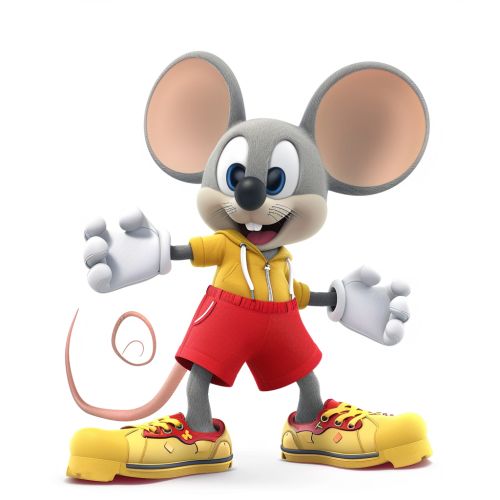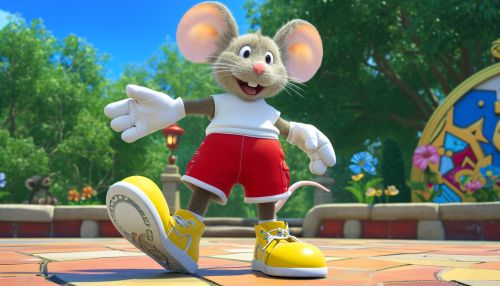Mickey Mouse
Early Life
Mickey Mouse is a cartoon character created in 1928 by Walt Disney and Ub Iwerks at the Walt Disney Studio. Mickey is an anthropomorphic mouse characterized by his cheerful optimism and mischievous demeanor. His iconic status has made him the official mascot of The Walt Disney Company.
Creation and Debut
Mickey Mouse was created as a replacement for Oswald the Lucky Rabbit, an earlier cartoon character created by the Disney studio for Charles Mintz of Universal Studios. In the spring of 1928, with the series going strong, Disney asked Mintz for an increase in the budget. Instead, Mintz took the opportunity to demand that Walt take a 20% budget cut, and as leverage, he reminded Disney that Universal owned the character, and revealed that he had already signed most of Disney's current employees to his new contract.
Characterization
Mickey Mouse is characterized as a cheerful and mischievous "little guy" with a lot of heart. He is optimistic and a friend to everyone. Although Mickey is usually the lead role in stories, he is often seen in the role of an everyman, a gullible good Samaritan who is often left to his own devices to foil the plans of his adversaries.
Voice
Mickey was first voiced by Walt Disney himself, who continued to voice the character until 1947. Since then, the character has been voiced by a series of actors including Jimmy MacDonald, Wayne Allwine, and currently, Bret Iwan.
Appearance
Mickey's early design bore a closer resemblance to Oswald the Lucky Rabbit, who was Disney's original character before losing the rights to Universal. Mickey's design was simplified over the years, with his body becoming more round and his face becoming more expressive. His iconic outfit of red shorts, large yellow shoes, and white gloves became a staple of the character.
Cultural Impact
Mickey Mouse has had a profound influence on popular culture. He is a symbol of the Walt Disney Company and has been used in various merchandise, television shows, and films. Mickey has also been used as a figure of American optimism during times of hardship, such as the Great Depression.
See Also


